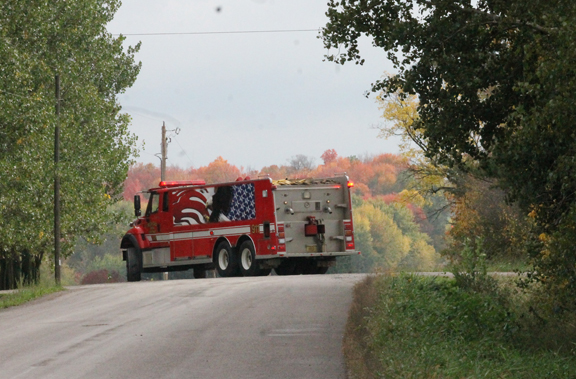Protect yards over the winter with maintenance
With the pandemic keeping people sheltering at home, more people are extending their outdoor time in the winter, by adding fire pits, outdoor heaters and other features. Even in the wintertime, it’s important to take care of yards.
The Outdoor Power Equipment Institute, an international trade association representing power equipment, small engine, portable generator, utility vehicle, golf car, and personal transport vehicle manufacturers and suppliers, offers the following tips to keep any yard in top shape for winter use.
• Stop trimming the lawn once it freezes. Trim grass to the height recommended for the lawn variety before it freezes. Cutting grass too short can leave it dry and exposes it to the elements, not to mention insects and disease.
• Add a thin layer of mulch to the lawn before it’s too cold. A thin layer of mulch can protect grass roots from snow and frost. It can even prevent deeper layers of soil from freezing, making it easier for the lawn to bounce back in the spring.
• Check trees for dead or damaged limbs. Removing dead or damaged limbs before inclement weather arrives, is one way to protect shrubs and yard from damage (not to mention people and pets). Snow and ice can weigh heavily on dead branches, and make them snap and fall. Remove any dead branches carefully with clippers, a chainsaw or pole pruner, following safety precautions. Consult an arborist for problematic trees.
• Mark pathways to clear of snow and ice, and beds to avoid; stakes or sticks can help. When it’s time to run the snow thrower, it won’t accidentally cut a path through the lawn and can stick to walkways. Always follow manufacturer’s safety procedures and never put a hand inside the snow blower. Always use a clean out tool or stick to clear a clog. Be sure that children and pets are safely inside, and not near outdoor power equipment while it’s operated.
Keep new (and old) plantings well-hydrated. Many people have added trees and shrubs to their yards during the pandemic, and caring for them in the winter is still important. Plants and trees that are well-hydrated, are more likely to survive a hard freeze, so water well before the cold snap sticks. Newly planted trees can only survive about two weeks in the winter without water, so be sure to water any new trees, if they aren’t getting water naturally from rain or snow. If the outside hose is already shut off for the winter, use a bucket and add 5 gallons to the area around the tree.
• Continue watering plants and trees even after the leaves drop. Older plants and trees should enter winter well-hydrated, so continue watering even after the leaves have dropped. Even in the wintertime, hardy evergreen plants continue to lose moisture through their needles and if it’s a dry winter, they need supplemental water too.
• Don’t shake heavy snow and ice off branches. It may be tempting for children (or adults) to wiggle those branches and watch the snow come off, but snow or ice can damage a branch. Shaking them can cause the branches to snap. It’s better to wait until the snow melts to assess the damage.
• Remove damaged branches as soon as the weather allows. If snow or ice have snapped a limb, look at the cut and assess the damage. Try to get a clean cut on an already broken branch or limb, as this will make it more difficult for insects or disease to enter the stressed area on the tree, or shrub. Follow all manufacturer’s safety precautions if using a chainsaw or pole pruner.
• Be careful about salt. Salt can melt snow and ice, but it can also damage plants and trees, by drawing water away from their roots. Keep salt applications away from trees and shrubs. Salt should also be cleaned off pet paws, following a romp outside in the snow.
Remember to get outside, even when it’s chilly. It’s good for mental and physical well-being, to spend time in family yards and breathe in the fresh air – and it also helps connect with each other and with nature.



